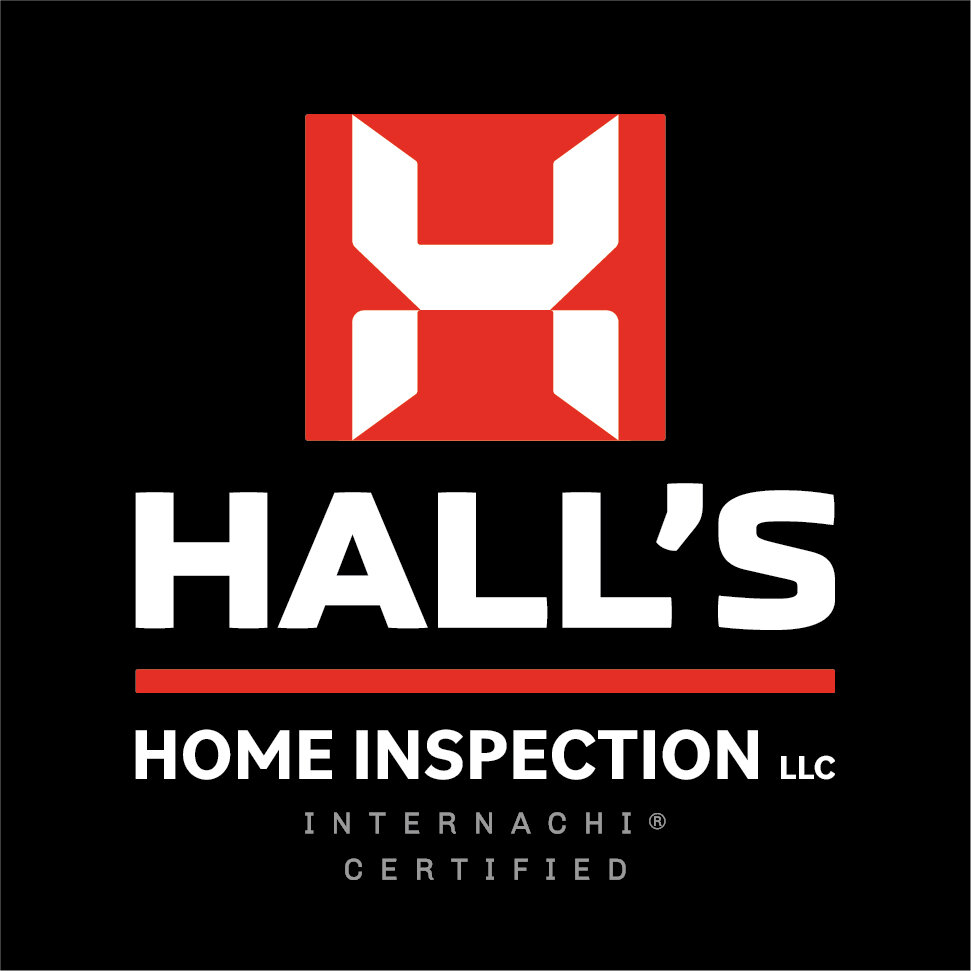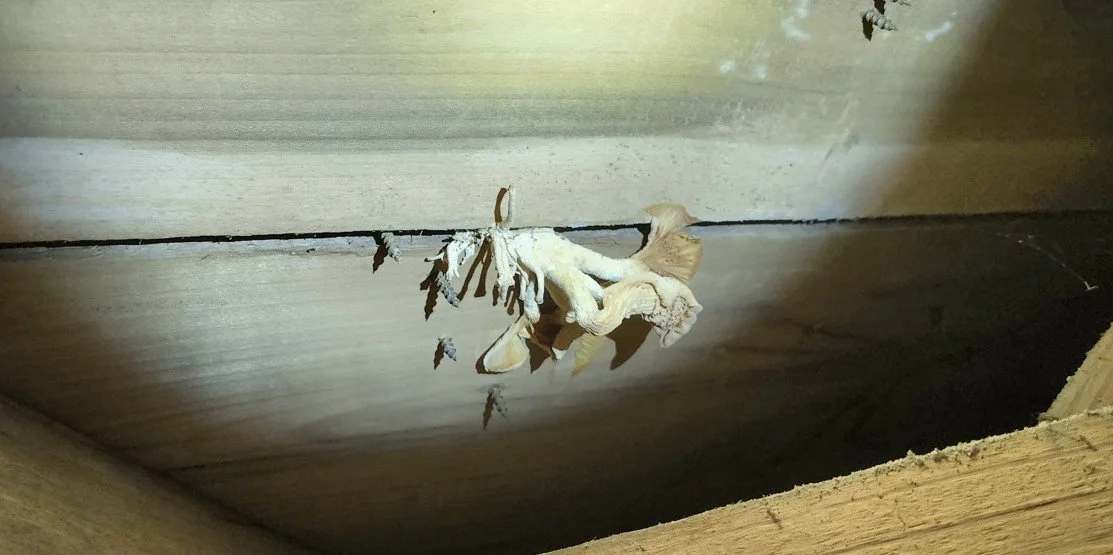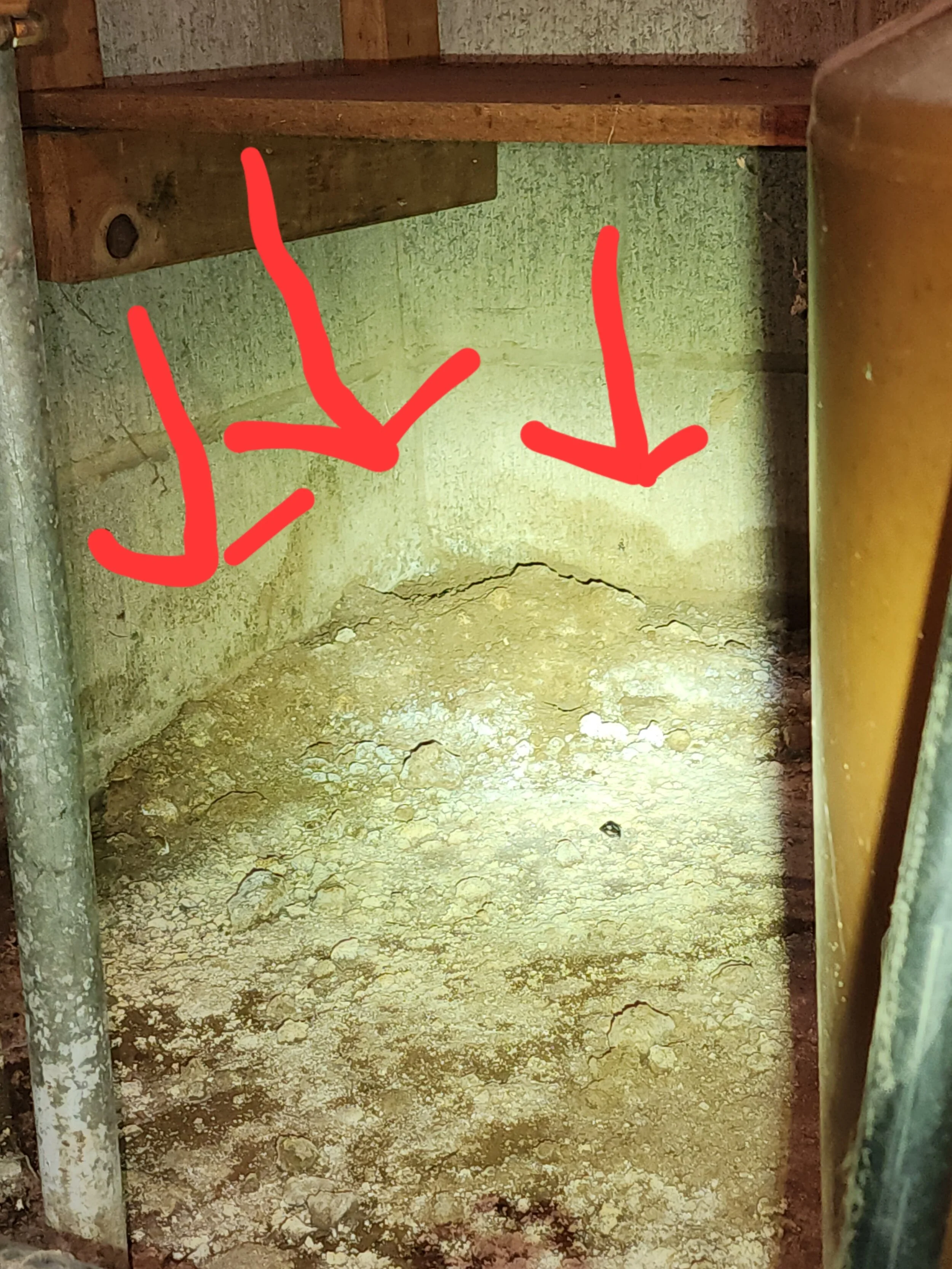Why is there Mold in my Crawlspace?
Mold and Fungal Growth in Crawlspace
Mold is very commonly found in crawlspaces. The majority of crawlspaces have a small amount of growth here or there but it is abnormal to find large amounts.
Heavy mold growth
This indicates a water leak. In this case it was from the furnace.
Not the good kind of mushroom.
Where Does it Come From?
Mold spores are always in the air. They are outside, inside, and all around. When the spores find an area that is wet and has sufficient food they begin to grow. When they reach a certain amount this mold becomes visible to the naked eye.
Mold can lead to wood rot and health problems. People are affected differently by mold. Some people are very sensitive and others not so much. In many people mold can cause problems. A few species are toxic, but only a lab sample can reveal species and just because it’s black doesn’t mean it’s toxic.
Mold is a symptom of a wet area. Without water mold cannot grow. Therefore, the first step to removing mold is to solve the water problem.
Crawlspaces are inherently wet areas. Although not every crawlspace has water in it, almost every crawlspace has some moisture in it. These factors cause and contribute to mold growth. Let’s get into it.
1: Exterior intrusion.
Water intrusion from the exterior is very common, especially on homes at hills (which is the majority in West Virginia). Good contractors will grade so that water is directed away from the home, but in older homes that’s often not the case. Once water enters the crawlspace mold can begin to grow on wood, insulation, etc.
The staining is from water intrusion.
The ground may look fine here, but it is actually slightly pitched to allow water into the crawlspace. Both of these are the same home and area.
In some cases there is no hope for a French drain. In these cases a sump pump is almost always needed. This was a dry day and yet water was coming into the crawlspace. Of course there was mold here.
The best way to help keep water out of crawlspaces is to improve the grading. We want the ground to slope away from the home, ideally with a 6 inch drop over 10 feet or more. This helps water drain away from the home. Downspouts should be extended 6 feet away from the home or go into a drain. If they discharge next to the home, even with splash blocks (those things suck) you may get water in the crawlspace. In many cases simply adding dirt and extending the downspouts can stop water intrusion.
Other times there may be a hill or neighboring home right next to the home. Or the area may just stay wet. In these instances a French drain system can oftentimes help. A French drain is when you burry a drain with holes in it. It is covered with fabric to keep dirt out and backfilled with gravel and dirt. Properly installed, a French drain system will direct water away from the home. These don’t always work, especially if they are not installed properly or they get clogged over time but they are effective when installed properly.
In many cases you can stop water intrusion simply by adding dirt and extending downspouts out.
Sometimes a French drain is not enough. In those cases an interior drainage system is needed. Drainage can be installed inside the basement or crawlspace that leads into a sump pit. A sump pump will then pump out any excess water. Properly installed, a sump pump will guarantee the area stays dry.
2: Condensation and Humidity.
Condensation and humidity are the reason that mold is so commonly found in crawlspaces (especially when in small amounts). Even if there is no water coming into the crawlspace there are still moisture sources. One of the biggest are air ducts.
When your AC is on these ducts get very cold. The rest of the crawlspace, however, is somewhere between the outside temperature and the inside temperature. This causes condensation, or water, to form along the ducts. This is called sweating and it oftentimes produces small amounts of mold. It’s not always major but it does happen. Even insulated ducts tend to sweat.
This joint is not air sealed. Air will leak into the crawlspace. This is not always a big deal, but I have seen cases where it was leaking so bad it was causing large amounts of mold.
This problem is even worse in older homes where ducts are not air sealed or insulated. Air sealing is when you seal the joints between two ducts. “Duct” tape is designed for this although it’s a poor choice. Foil tapes or mastic are the way to go. They prevent any air from escaping. It’s easy to find leaky ducts. Simply hold your hand over the ducts when the AC is on. If they are leaky you will feel it.
Lastly is insulation. In the winter, if you don’t have insulation in the crawlspace the outside air will be colder than the crawlspace air. The home’s heat will radiant downwards. This will create condensation in the crawlspace, usually at the band/rim joist (perimeter walls). This can cause mold or wood rot. Insulating (and closing crawlspace vents during winter only) will help to reduce this.
Solutions
As discussed, the exterior grading/drainage need to allow for proper drainage. Improving this will reduce and in some cases prevent water intrusion. In some cases the underlying soil composition (such as buried clay/sand that restricts water flow) may necessitate a sump pump system instead.
A vapor barrier needs to be installed in every crawlspace. A vapor barrier is a piece of plastic designed to reduce the amount of moisture that enters the crawlspace from the ground. Many older homes lack these.
Vapor barriers should be overlapped by 6 inches and taped at the seams. They should be lapped up walls, piers, penetrations, etc. and taped. The goal is to create an air tight space between the dirt and the home. Even in a dry area the ground still holds moisture. A properly installed vapor barrier will reduce moisture content. Unfortunately very few contractors do this. Most just throw it down and leave a bunch of corners open.Every crawlspace should have a dehumidifier. A dehumidier removes moisture from the air creating a dryer area. The higher the humidity the more condensation will occur. The more condensation the more likely you will have mold. This is not required by code but it does help reduce moisture.
Insulation should be present at both the crawlspace and the air ducts. This helps to prevent hot and cold air meeting which causes condensation.
Encapsulation. Encapsulation is hands down the best way to keep a crawlspace dry. It is, however, the most expensive way. Encapsulation is when the crawlspace vents are sealed (usually with spray foam). The crawlspace is insulated and a sump pump is usually installed. A dehumidifier or supply and return air duct system is installed. This makes the crawlspace the same temperature and humidity as the home while preventing outside water or humidity from getting in. Properly done this keeps the area clean and dry. Unfortunately it can be more than $10,000 to renovate an existing crawlspace although it’s not that expensive to add on when building from scratch.
In my opinion encapsulation is the only right way to build a crawlspace in our area. It is too humid and too wet to build the traditional vented way. This is allowed by code, however, so it cannot be called a defect. 99% of crawlspaces are traditional.
If you suspect you have mold in the crawlspace, testing is good practice. Testing mold proves that mold does or does not exist at the areas sampled. This prevents buyers and sellers from arguing over what is and is not mold. You don’t really know for sure sometimes until it’s tested. A lab test settles this.
Some species of mold are toxic. The main ones are Stachybotrys and Chaetomium. Other species such as Aspergillus, Cladosporium, and Alternaria are not considered toxic but can still cause allergy-like effects in many people. All mold can affect people who are immune compromised or allergic and reduce quality of life. These are the more commonly found molds when testing. The toxic molds almost always indicate a a heavy water source has been present.
Removal
Small amounts of mold can typically be removed by homeowners if they feel up to it. The EPA advises anything bigger than 10 square feet be handled by professionals. If growing on wood or masonry, you can remove mold with detergent, water, and elbow grease. It will come back unless the area is dry. If you choose to remove mold proceed at your own risk.
If insulation or non porous materials have mold on them, they need to be thrown away. There is no way to effectively clean these materials.
Mold inhibiting paint or chemicals can be applied after remediation. Do not paint over mold. It is not the proper way to remediate. Do not use bleach. The goal is to remove the mold, not to attempt to “kill it”. Bleach may work, but it could hurt you and detergent and water is all you need to remove.
Mold in a crawlspace can work it’s way into the home via airborne spores. Everything in a home goes upwards. This is called the stack effect, the air from the crawlspace works it’s way into the home and up to the attic through any openings, cracks, or gaps. Therefore, water conditions and any mold should always be addressed.
Image Gallery
A small amount of growth like this is very common to find in crawlspaces.
This type of growth is not common and usually indicates a very wet environment.
Clearly this crawlspace has been flooded and there are water puddles. The white and black stains on the wall are from water. This is a recurring problem.
Water is coming into the crawlspace. It hadn’t rained in days. This indicates a recurring problem. Very bad to put drywall next to it. You should never use drywall in a crawlspace it will develop mold every time.
A lab sample confirming there was mold at a crawlspace. There were two species and one of them was active (the “many” Mycelial estimate) indicating the area likely stays wet.















